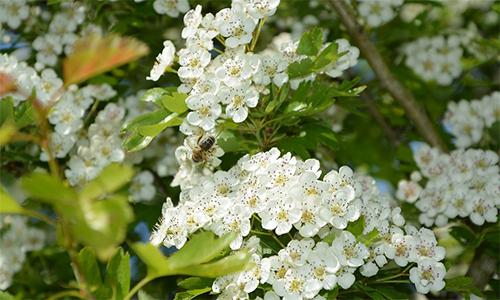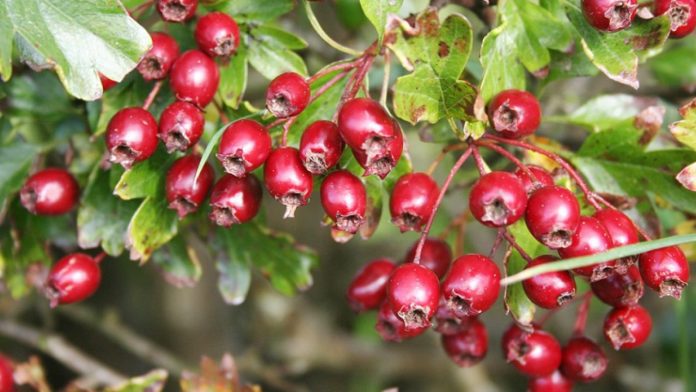For our bodies to work properly, cholesterol is required. Brain, nervous system, cell walls and the development of hormones, vitamins, and bile acids that help digest fat in your body are needed. Cholesterol is generated in the liver to maintain supply to the body.
Sadly, too much cholesterol is causing health problems. Eating foods high in cholesterol can cause heart disease, stroke, and other cardiovascular problems. High blood cholesterol levels can cause plaque to accumulate to the walls of the arteries. As the aggregation of plaques increases, the walls of the arteries harden and thicken, causing atherosclerosis. If the plaque continues to build up in the arteries, it can block a blood artery completely and cause a heart attack or stroke.
There are various forms of cholesterol in the body: lipoprotein of high density (HDL or “good cholesterol”) and lipoprotein of low density (LDL or “bad cholesterol”). Triglycerides, another form of blood lipid, and cholesterol precursor, also lead to elevated cholesterol and heart disease problems.
Related: 10 Medical Home Emergencies and How to Treat Them

Reducing Cholesterol
Most physicians immediately prescribe statins to all heart disease patients of any sort, regardless of their cholesterol levels. I have two friends who have had devastating side effects from these medications and if possible I favor medicines and other remedies.
Fortunately, herbal treatments can reduce cholesterol without potentially harmful side effects. Hawthorn berry is excellent for cholesterol reduction, and has other health benefits as well.
Hawthorn for High Cholesterol and Heart Disease
The hawthorn plant’s leaves, berries, and flowers efficiently control blood pressure, softening high and low blood pressure, and reducing high cholesterol. These advantages treat various cardiac and circulatory disorders. These can be used to treat chest pain, heart rhythms irregular, atherosclerosis and other health problems.
How Hawthorn Reduces Cholesterol
Evidence shows that hawthorn reduces LDL, or bad cholesterol, and triglycerides in the blood. This also breaks down plasma fats, producing more HDL, or healthy cholesterol, and reduces LDL cholesterol ‘s substantial ratio to HDL cholesterol. In reducing the ratio, the risk of cardiovascular disease can be minimized.
Hawthorn berries also increase bile production and excretion which reduces cholesterol production and helps the body remove LDL cholesterol. The berries are nutritionally strong and contain a wide variety of flavonoids and antioxidants that reduce free radicals in the body.
Hawthorn can be used, if you prefer, with traditional drugs. Please discuss it with your doctor or health care provider before use, particularly if you are taking prescription medicines of any sort.
What is Hawthorn?
Hawthorn, Crataegus spp., is a thorny tree or bush native to Europe, North America, and Asia. They include roses, apples, pears, plums, and cherries. The bush produces edible, medicinally active red, or yellow berries.
Related: Personal Hygiene First Aid
Hawthorn Leaves, Flowers and Berries are Used to Treat:
- Heart disease
- High Blood Pressures
- High blood cholesterol and triglycerides
- Heart Failure
- Chest pain, Angina
- Blood circulation disorders
- Swelling
- Digestive issues
- Anxiety and insomnia
- Diabetes
- Asthma
- Stress reduction
- Menopausal symptoms
- Healing skin and reducing signs of aging
- Increasing hair growth
- Protects the brain and improves cognitive function
- Anti-inflammatory and antioxidant
- Weight loss and reduces fat buildup
- Supports liver and kidneys

Which Parts of the Plant are Most Effective?
Leaves, berries, and flowers are all beneficial medicine. Each has higher or lower concentrations of various flavonoids, but they’re all beneficial. I prefer to make a daily supplement with the leaves and flowers in teas and dried berries.
How to Use Hawthorn
Hawthorn may be used to produce syrups, jelly, as a juice, tincture, tea or as an ingredient. Dried leaves and flowers are sometimes used to make tea, but can also be used to make fresh berries. You can powder dried leaves, seeds, and fruits and use them to make capsules or tablets. The best way is to chew a couple of fresh or dried berries every day. A tiny handful suffices to give you all the health benefits.
Keep a stock on hand if you have a hawthorn bush and use it regularly for better results. When you don’t have a local hawthorn bush, you can purchase additional supplements online.
It takes time for Hawthorn to work and should be taken regularly for best results. Results will start to take effect 3 to 6 weeks later. It is not sufficient for treating acute problems.
Dosages for Hawthorn
The dosages were not specifically set by the FDA or other authorities. Such recommended doses are taken from effectiveness research trials, and from vitamin manufacturers’ guidelines. To use hawthorn, choose one or more approaches, keeping in mind the required doses as a whole. I take 2 cups of tea every day for example, and add one daily dose of dried berries.
- Hawthorn extracts: take 160 to 1800 mg, 2 to 3 times daily.
- Use 1 to 3 cups of tea daily
- 300 to 1000 mg of dry berries, 3x a day
- 200 to 500 mg of dried leaves and flowers, 3x a day.
How to Make Hawthorn Tea
- 4 to 5 g of dried berries OR 1-2 g of dried flowers or leaves
- 1 cup boiling water
- Add hawthorn herb to boiling water cover it and allow to steep for 20 minutes
- Strain and enjoy.
Related: 5 Home Remedies for Diarrhea
Other Ways to Lower Your Cholesterol
I am sure your doctor has already given you this advice if you have been diagnosed with high cholesterol, so I will reiterate it here. It is believed that high cholesterol is an issue caused by eating too many fats and the wrong kinds of fat. Some people are genetically inclined to get high cholesterol, even if they control their weight and diet carefully.
Eat fewer foods with more “healthy” fats. Adjust your fat sources to include more fried fish, nuts , seeds and fresh fruits and vegetables, as much as possible. Cut down on the vegetable fats and meat fats. Enhance the fats Omega-3 and Omega-9.
Also, lose weight and stop smoking if possible. For some, these ideas are helpful but not everyone responds to them. When your doctor says you have high cholesterol, or if you are concerned about numbers of cholesterol inching upward as you age, try to take hawthorn. It promotes body safety by regulating cholesterol and blood pressure.











